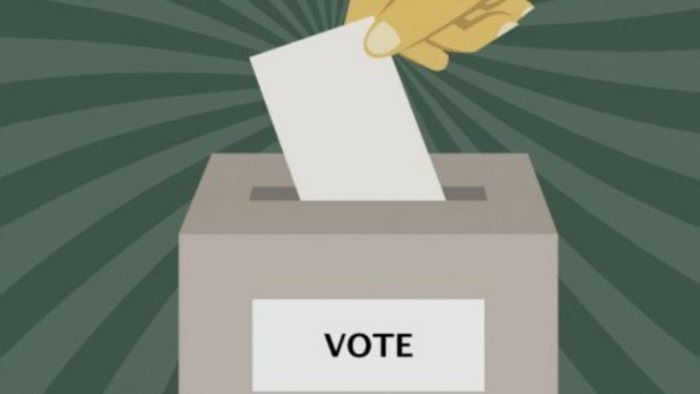
Everyone is aware that in India, the caste arithmetic in a particular constituency determines the winnability of a candidate in the election. Hence, it is considered as the main criterion for the selection of candidates for contesting elections, and not one’s competency and integrity or honesty. Appeals for votes are blatantly made in the name of caste and sub-caste loyalties. Karnataka is no exception to this.
In the initial decades of electoral politics, there was complete domination by only two communities, namely Lingayats and Vokkaligas in the state. The paradigm started to shift as the pressure from the Other Backward Classes started mounting and the control of the ‘socially dominant castes’ started to wane over the Congress as well as other parties as a nationwide phenomenon.
In Karnataka, the emergence of Devraj Urs as the most popular leader and Chief Minister in the 1970s brought people belonging to the backward sections of society to the fore as challengers to the two entrenched forces. His tenure was well-acclaimed for reform measures undertaken for the OBCs and the Scheduled Castes.
Where do parties stand on caste lines?
The BJP is largely identified as a party of the coastal belt, Malenadu and North Karnataka. The caste groups that are known to support the party are Billavas, Brahmins, and Bunts in the coastal belt; Lingayats remain a solid support base for the party in North Karnataka.
In recent times, they have been successful in availing the support of the Scheduled Tribes in the eastern part of the state. At the same time, it has been attempting to attract the Dalits by cultivating grassroots-level leaders belonging to the community, especially those identified as 'left’ Dalits or 'Madiga’, who are the most backward among the SCs and have a feeling of being left out especially when compared to the ‘Holeya’, considered as ‘right’ Dalits. Bhovi and Lambani are other groups in the category who have been with the BJP for some time now.
The Janata Dal (Secular) is identified as a party of Vokkaligas, who are dominant in the Old Mysore region. The Congress has formed a combination of the minorities, OBC (Kurubas in the lead), and ST (known by the Kannada acronym AHINDA), and expects support from them.
As per the 2011 Census, the population of the state by religion is 84 per cent Hindus, 12.92 per cent Muslims, and 1.87 per cent Christians. The SC and ST constitute 17.15 per cent and 6.95 per cent respectively. The approximate estimates of prominent caste groups in the state based on various available sources in a total population of 61 million is OBC 30 per cent, Lingayat 17 per cent (they are not a monolith unit), and Vokkaliga 15 per cent.
Elections are no doubt indispensable for democracy, but if elections are influenced solely by considerations of caste and help to steer the course of the entire state to the benefit of just one or two castes, we cannot be termed a democratic polity. The government formed from this kind of election cannot be considered to be genuinely representative of the people.
Even the common people need to realise that voting one’s own caste members just for that reason helps only to the extent of satisfying one’s false pride, while the elected representatives always favour those who are directly close to them. If this state of affairs had benefited the lives of the common people, all those belonging to the castes of those leaders who ruled the state would have been better off than others.
One such example was when this writer interacted with the Vokkaliga-dominated villages in the Western Ghats, whose centuries-old habitats were under threat of eviction, allegedly due to the imposition of undemocratic forest laws. For decades, they have been fighting for justice without success. This is despite the presence of powerful Vokkaliga politicians in the government and equally authoritative bureaucrats from the caste in influential positions.
Similarly, how does one explain the economic backwardness of the Lingayats, who are an overwhelming majority in the six districts of ‘Kalyana Karnataka’?
Who is to blame?
The people of Karnataka – the voters -- have to blame themselves for the disorder because they do not demand meaningful and accountable programmes and manifestos from the political parties. Besides, they shift their loyalties blindly to whichever party their established caste leaders join or form anew. A look back into the past decades reveals that until Veerendra Patil, the former Chief Minister, was with the Congress, the Lingayats were loyal to that party. But the moment he was removed from the post, they dumped it. The same happened to BJP when B S Yediyurappa was asked to step down from the Chief Minister’s post.
Vokkaligas remain loyal to the party that offers one of their own caste the top post in the government. They oscillate between the Congress (until S M Krishna) and the Janata Dal(S). The Brahmins now considered loyal to the BJP in the state voted en masse for the Congress when Gundu Rao was its leader. This is true of the supporters of the late OBC leaders like Devraj Urs and S Bangarappa, and now of Siddaramaiah.
In the midst of all this, the morale of the common voters is at its nadir. The defection of those whom they elected as their representatives to other parties, which has become rampant, has dented their belief in the system as they find the very idea of democracy under threat.
(The writer is a faculty member with the Gujarat Institute of Development Research, Ahmedabad)